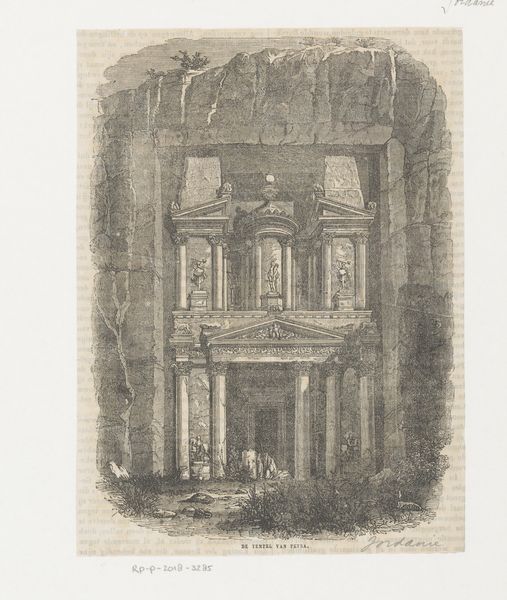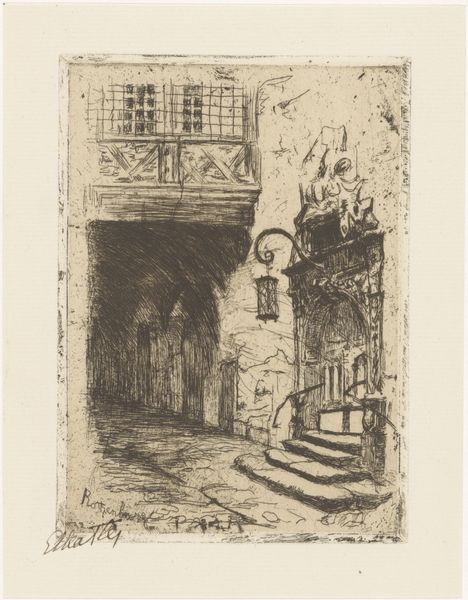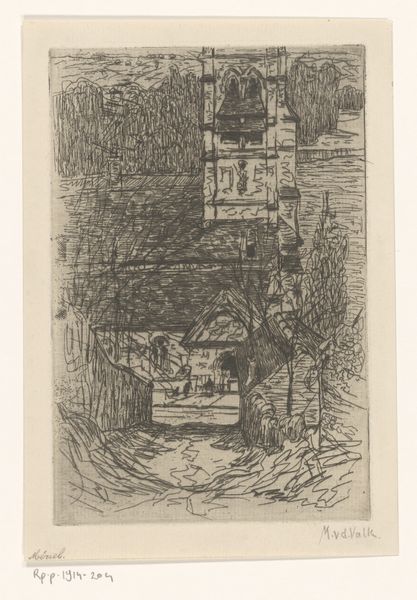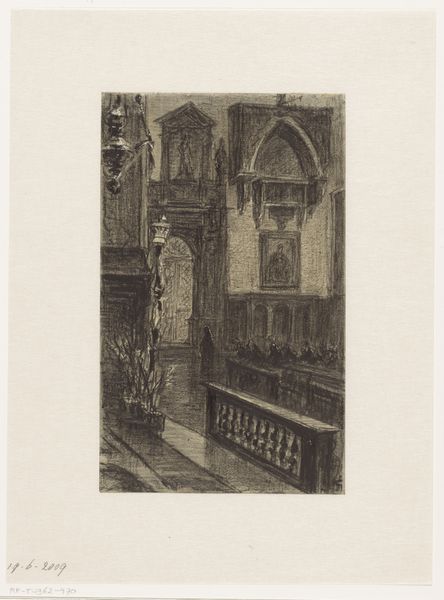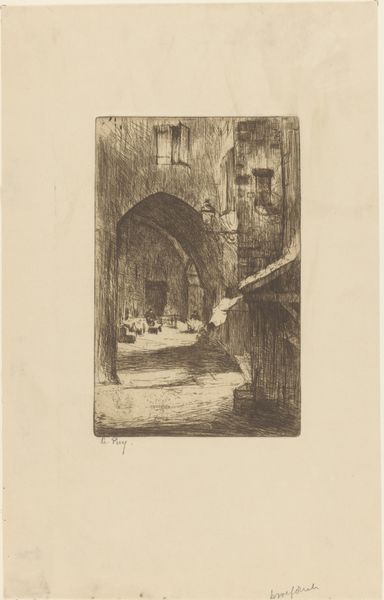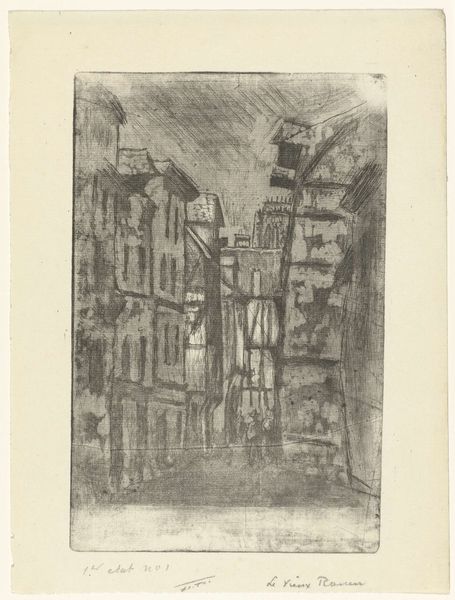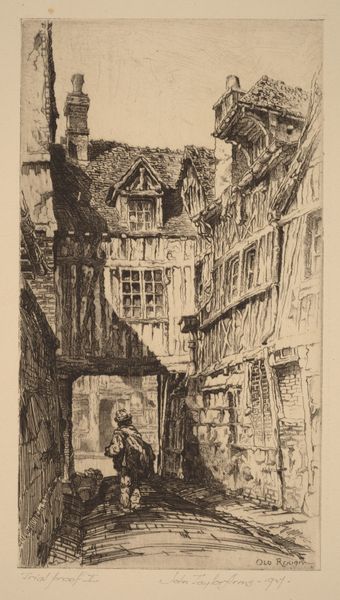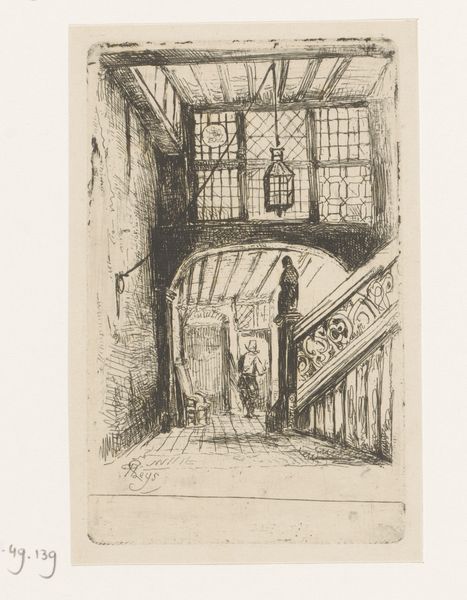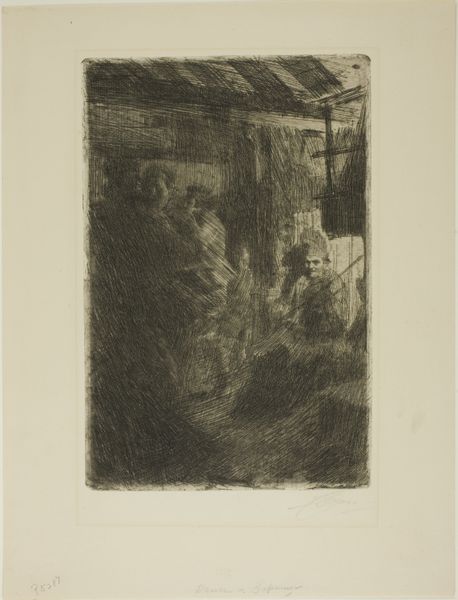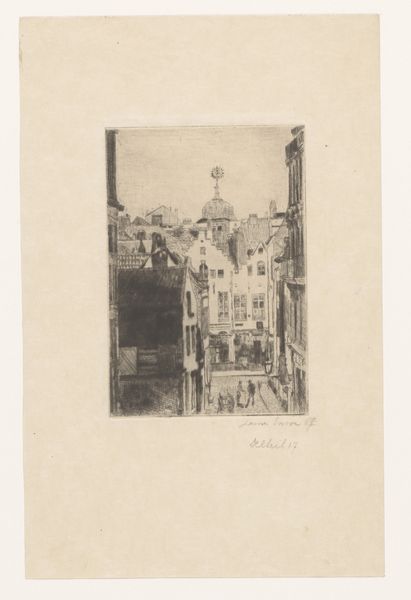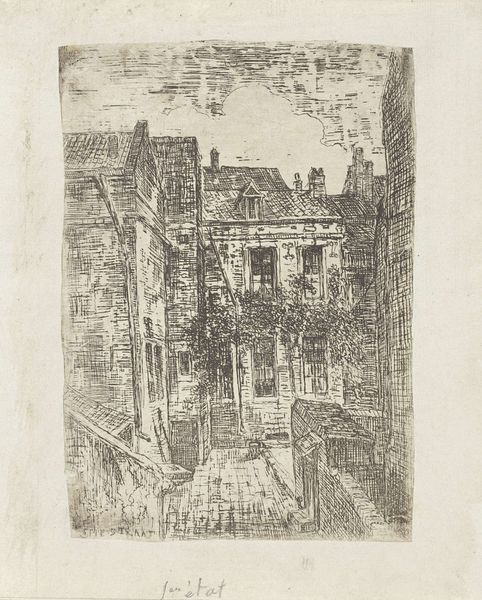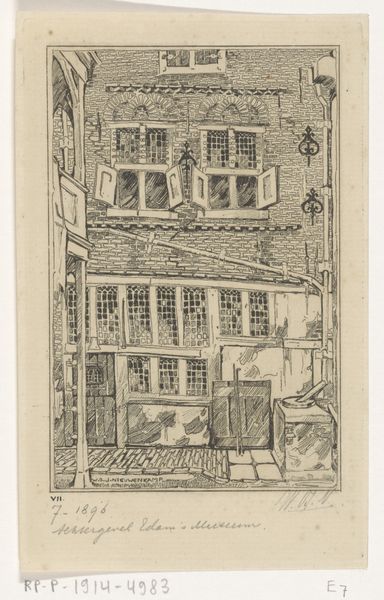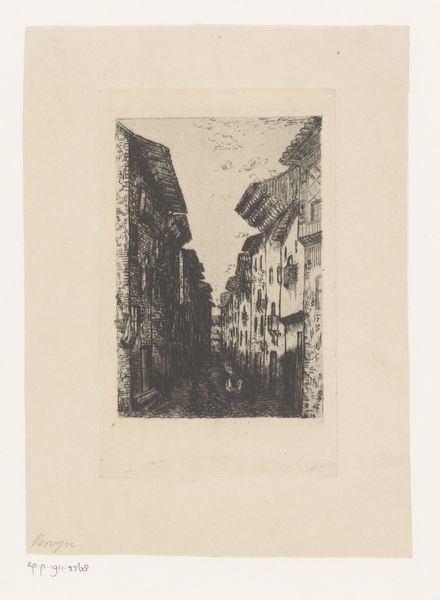
drawing, print, etching
#
drawing
# print
#
etching
#
landscape
#
etching
#
cityscape
Dimensions: height 140 mm, width 102 mm
Copyright: Rijks Museum: Open Domain
Curator: Looking at this print, an etching called "Rothenburg" created between 1867 and 1910, I am struck by its atmosphere of almost melancholic stillness. What's your immediate reaction? Editor: I find it immediately captivating. The way the light catches the textures of the timber and stone; it almost feels like stepping back in time, a forgotten corner of the city caught in a reverie. Curator: Exactly. This seemingly quiet scene holds a tremendous weight of cultural memory. Rothenburg itself, known for its medieval architecture, becomes almost a symbol of time immemorial. The artist is drawing on centuries of history embedded in those stones. Editor: It certainly speaks to a romanticized past, but what I find interesting is the suggestion of the artist's social context. The etching technique, popular among printmakers seeking accessibility and wider audiences, gives Rothenburg a specific public character. The detailed cityscapes allowed those who couldn't travel to experience different cultural contexts. Curator: That is true, but I am also curious about the almost hidden symbols. Do you notice the structural pillars framing the main gate, they are suggestive of liminal spaces, gateways between eras. And how this is depicted through careful textural contrast is really masterful in rendering not just visual architecture but historical layering. Editor: Indeed. And speaking of contrast, I note the artist is named Etha Fles. As a woman working in this period, what would be her engagement in documenting this imagery? This was the advent of city tourism, of capturing old Europe as modern structures began to arise. Perhaps this perspective provided an entry point for a female artist, something subtly distinct. Curator: That perspective undoubtedly informs our reading. A woman portraying a man's world opens new narratives of power and belonging, making the cityscape a symbolic canvas to inscribe female authorship and experiences, a rare voice in the dominant narrative. Editor: Absolutely. Seeing art as part of social history certainly enriches my reading. Understanding Fles' artistic environment and Rothenburg's allure as a medieval city enlivens this somewhat static etching. It shows a unique perspective on Europe’s cultural transition. Curator: Yes, and by focusing on the symbolic elements we find within such artworks we have discovered fresh dialogues with time and history—which might just bring this scene into vivid immediacy for a modern observer.
Comments
No comments
Be the first to comment and join the conversation on the ultimate creative platform.
